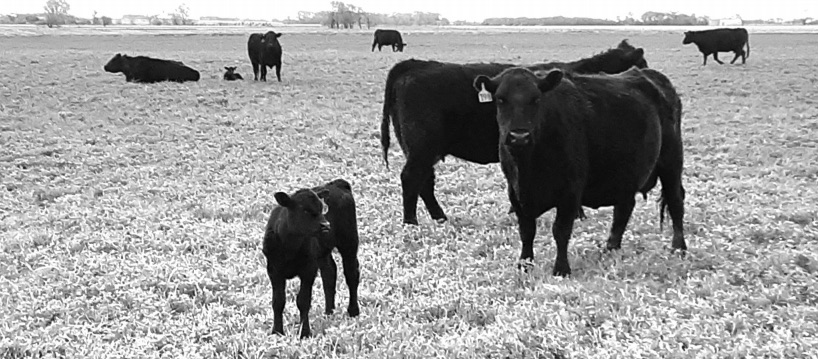By S. Roy Kaufman | Jun 20, 2019
The following article was featured in the Freeman Courier in June 20, 2019 as part of the feature “Rural Alternatives”.

Chris Eisenbeis began farming in the Turkey Ridge valley in the 1980s. After a decade or so he realized that, to stay in farming, he would either need to acquire more land and larger equipment – which represented a large investment and more debt – or do something radically different with his land.
Eisenbeis had been reading and learning about grassland farming through a journal, The Stockman Grass Farmer, and decided to move the farm in that direction. He converted the majority of his cropland into hay and grass and became a grass farmer.
Today, Eisenbeis’ farming operation looks like this: He has a cow/calf operation of about 100 beef cows, which are grazed rotationally throughout the summer months, usually about three days on a paddock. The paddocks are long narrow strips across his land that can be easily fenced as the cattle graze, or for hay to be put up for winter. He has waterers that can be easily moved to every paddock. His cows calve on grass in April, so he has fewer problems with calving. The calves are sold in Yankton as drug-free feeders, usually at about 500-600 pounds, and this is the primary income of the farm.
Additionally, Eisenbeis does plant about 30 acres of corn annually on a seven-year rotation to renew the hay and grassland. He grazes most of the corn bit-by-bit late in summer and fall, and picks about seven acres in the ear to be ground as feed for the calves during the winter before they are sold. He buys 15-20 seasoned cows a year as replacement stock for his herd. Most of his farm work occurs in summer when he makes hay for winter on paddocks in rotation with the grazing animals. He does have year-round chores rotating the cows on pasture in summer and feeding them in winter.
Eisenbeis estimates that he clears about $100 an acre on his farm. His farming operation has a low over-head. All he needs for equipment is a windrower and baler, a tractor, and a few old machines to plant and harvest the corn — all easily purchased second hand. As a result, he carries little debt on his operation. Plus, his operation is low-risk, as grassland is not as susceptible to climatic and weather shifts as cropland.
In addition to all this, Eisenbeis’ farming operation is good for the land and the soil. He doesn’t have to worry about soil erosion or the pollution of air and water with contaminants. His operation actually builds soil with organic content and likely adds carbon to the soil rather than releasing it into the air in the form of a greenhouse gas contributing to global warming as conventional farming tends to do. He raises healthy livestock able to utilize what the land naturally produces for ruminants. Eisenbeis is able to sustain his farm into future generations, something too many conventional farmers burdened with debt fail to do.
While Eisenbeis’ farm is profitable, he acknowledges it probably cannot provide a living for the family in the manner in which we have all grown accustomed to living, so he began Eisenbeis Tax Service at Turkey Ridge to supplement the farm income. His business complements his farming operation, as most of the farm work occurs in summer, and most of his tax business comes in winter.
As conventional, commodity oriented farmers struggle with low commodity prices and a burdensome debt load, grassland farming might provide an attractive option. After all, the land those in this area live on was productive prairie grassland for millennia prior to the arrival of European farmers who broke the prairies for annual crops.
Rural Alternatives is an occasional submission from those who work with Rural Revival, a non-profit community organization committed to supporting local agriculture and its role in revitalizing and sustaining rural communities. Learn more at ruralrevival.org. S. Roy Kaufman is a member of the group.

